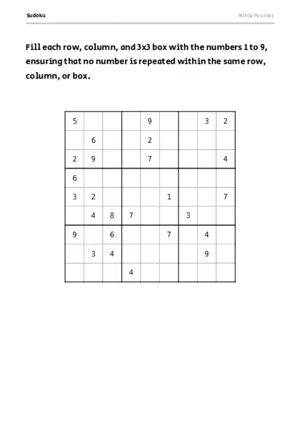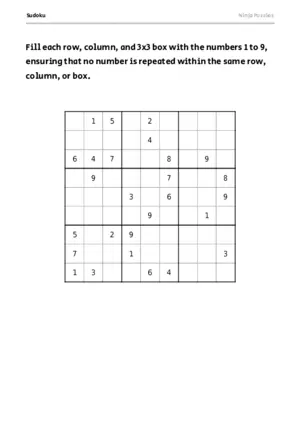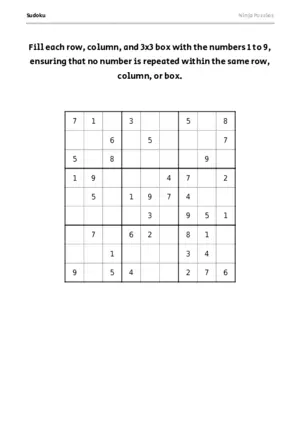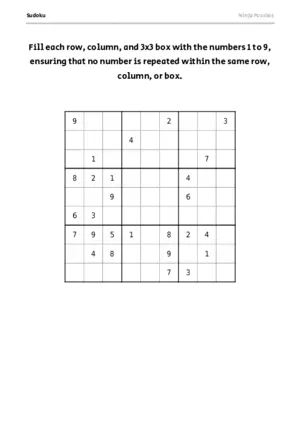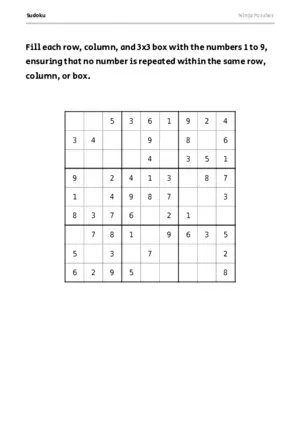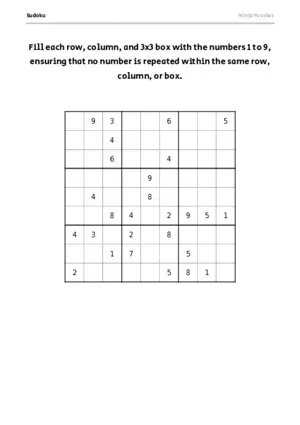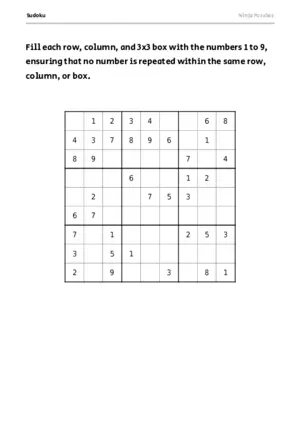Sudoku: Singleton Strategy and Techniques
The Singleton Technique is one of the fundamental strategies in solving Sudoku puzzles. It focuses on identifying squares that can only have one possible candidate number based on the numbers already present in the corresponding row, column, and box.
Here’s how the Singleton Technique works:
- Analyze the Puzzle: Start by examining the puzzle grid and identifying empty squares without any candidates.
- Look for Exclusive Candidates: For each empty square, analyze its corresponding row, column, and box to determine the numbers already present in those units.
- Check for Missing Numbers: Compare the numbers present in the units to the numbers 1 through 9. If there is a number missing and only one empty square remains in that unit, then that square must contain the missing number.
- Fill in Singletons: Once you identify a square that can only have one possible candidate based on exclusivity, fill in that number.
- Update and Repeat: After filling in a singleton, reevaluate the puzzle by analyzing rows, columns, and boxes again to identify any new singletons. Repeat this process until no more singletons can be deduced.
By utilizing this technique effectively, you’ll gradually fill in more squares with certainty and move closer to completing the Sudoku puzzle.
Remember to combine this strategy with other techniques such as cross-hatching, scanning for naked/hidden singles or pairs/triples/quads when necessary for better results.
If you need further assistance or want to explore other strategies for solving Sudoku puzzles, feel free to ask!
Sudoku Solver
If you get really stuck then we have an online Sudoku Solver, and a Sudoku Mini Solver to help you solve the most challenging Sudoku puzzles.
Advanced Sudoku Strategies
- Singleton Technique: This strategy involves identifying squares that have only one possible candidate number based on the numbers already present in the row, column, and box.
- Naked Pairs and Triples: When two or three squares in a unit (row, column, or box) have the same two or three candidate numbers, those numbers can be eliminated as possibilities from other squares in the unit.
- Hidden Pairs and Triples: This strategy focuses on identifying two or three candidate numbers that only appear in the same two or three squares within a unit. These numbers can then be eliminated as possibilities from other squares in the unit.
- Sudoku X-Wing: Sudoku X-Wing involves finding two rows or two columns where the same number can only occur in the same two positions. By eliminating that number as a possibility in the corresponding rows or columns, you can make further deductions.
- Swordfish: Similar to Sudoku X-Wing, Swordfish strategy expands the concept to three rows or three columns. It involves finding three rows or three columns where the same number can only occur in the same three positions, allowing for further eliminations.
- Sudoku Y-Wing: Sudoku Y-Wing is an advanced strategy that involves three cells and three numbers. By utilizing a specific pattern of candidate numbers, you can make deductions that lead to solving other squares.
- Sudoku XYZ-Wing: XYZ-Wing involves three cells and three numbers, with each number belonging to a different candidate list. It allows for deductions by creating chains of eliminations based on the relationships between the three numbers.
- Coloring: This strategy involves assigning colors (usually two) to candidates and using the relationships between these colors to make deductions.
- Backtracking: Backtracking is a brute-force technique that involves making educated guesses and trying different possibilities until a contradiction is reached or the puzzle is solved.

